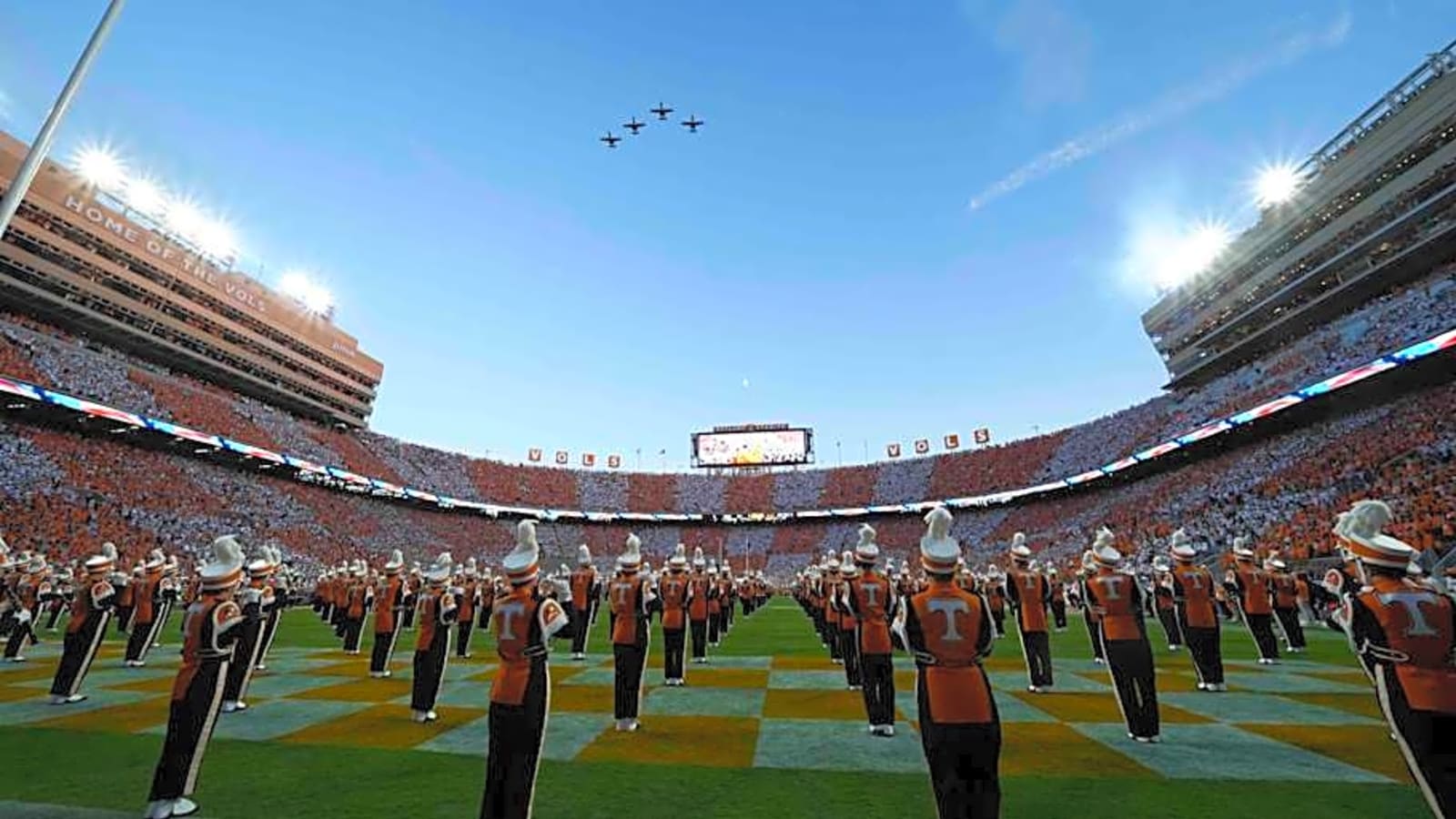
This year, Oklahoma will play five regular-season games away from Norman.
The Sooners have four true road games on their 2025 slate, as well as the annual Red River Rivalry game against Texas at the Cotton Bowl in Dallas.
Here’s what to know about the five foreign venues, ranking them from most intimidating to least daunting:
1. Neyland Stadium (Tennessee)
Tennessee’s Neyland Stadium is arguably the most raucous venue in college football.
The Volunteers’ home field set the nation’s decibel record at 137 for their 2023 game against Georgia on Nov. 18, 2023.
Neyland holds a capacity of 101,915, making it the sixth-largest stadium in college football and the third-largest in the SEC behind Texas A&M’s Kyle Field (102,733) and LSU’s Tiger Stadium (102,321).
Neyland Stadium was constructed in 1921, and the Sooners have played there just once. In its only trip to Knoxville, OU beat Tennessee 31-24 in double overtime in 2015, thanks to a Baker Mayfield-led comeback where the Sooners overcame a 17-point deficit.
OU holds a 3-2 all-time advantage over the Volunteers, but Tennessee beat Oklahoma 25-15 last year in Norman in the Sooners’ first year as an SEC member.
2. Bryant-Denny Stadium (Alabama)
With a capacity of 100,077, Alabama’s Bryant-Denny Stadium lives up to what the Crimson Tide have achieved in recent memory.
During Nick Saban’s tenure at Alabama, the Crimson Tide went 103-8 at Bryant-Denny Stadium. From 2013 to 2023, the Crimson Tide went 67-2 in Tuscaloosa.
With 18, Alabama has more national championships than any other school that plays at the NCAA Division I FBS level. But OU has the historic edge against the Crimson Tide head-to-head.
READ MORE OKLAHOMA SOONERS
- How Emmet Jones Kept Oklahoma's Receivers Confident Through a Tough 2024 Season
- How Oklahoma LB Owen Heinecke Can Contribute for Sooners in 2025
- Who Will be the Breakout Star for Oklahoma in 2025?
The schools have battled seven times, with Oklahoma leading the all-time series 4-2-1. Most recently, the Sooners beat the Crimson Tide 24-3 in Norman in 2024, shattering Alabama’s College Football Playoff hopes.
In an atmosphere that’s always rowdy, Crimson Tide fans will be particularly amped up after what happened in last year’s meeting.
3. Williams-Brice Stadium (South Carolina)
Holding 77,559 seats, Williams-Brice Stadium isn’t as big as Neyland or Bryant-Denny — but Gamecock fans are passionate.
Over the last two seasons, South Carolina is 10-4 in games in Columbia.
Night games traditionally bode well for the Gamecocks. Last season, South Carolina throttled Texas A&M — ranked No. 10 at the time — 44-20. That was the second game in a six-game winning streak that led them to a 9-3 regular-season record.
OU gets the benefit of playing South Carolina in the daytime, with kickoff scheduled for 11 a.m. Still, the Gamecocks have a devoted fanbase, and OU’s first trip to Columbia will be greeted by a strong turnout of home fans.
4. Cotton Bowl (Red River Rivalry)
Playing the Red River Rivalry at the Cotton Bowl doesn’t give either team any real advantages or disadvantages. The stadium is roughly three hours from both campuses, meaning that the crowd is about a 50-50 split for the annual game.
Breaking ground in 1930, the Cotton Bowl previously served as the home for the NFL’s Dallas Cowboys (1960-1971), the AFL’s Dallas Texans (1960-1962), the Cotton Bowl Classic (1937-2009) and the First Responder Bowl (2011-2018).
Now, the 92,100-seat stadium only hosts the annual game between the Sooners and Longhorns.
Texas leads the all-time series against the Sooners 64-51-5, most recently beating OU 34-3 in 2024. The Sooners, though, have a 3-2 edge in the rivalry since 2020.
5. Lincoln Financial Field (Temple)
The smallest stadium that OU will play at in 2025 is Lincoln Financial Field, home to Temple and the NFL’s Philadelphia Eagles.
“The Linc” holds 67,594 seats, many of which go unfilled for Temple home games. Owl games averaged just 13,919 fans last year, which was the lowest number in the American conference.
A big-name program like Oklahoma might draw more Temple fans than usual. But Lincoln Financial Field will still be far from the raucous atmospheres that the Sooners have to withstand later in the season.
Yes, it’s still a road game for OU. But it would be unsurprising if Sooner fans actually outnumbered Temple fans at this game.
More must-reads:
- Michigan QB Bryce Underwood faces immense pressure to win
- Quarterback battles at these top college football programs remain up in the air
- The 'Season TD pass leaders by NFL team' quiz
Breaking News
Trending News
Customize Your Newsletter
 +
+
Get the latest news and rumors, customized to your favorite sports and teams. Emailed daily. Always free!








